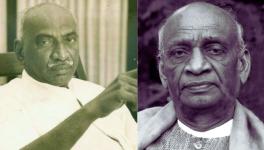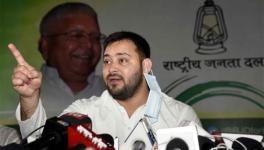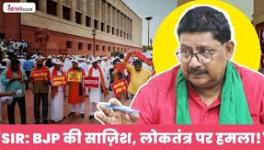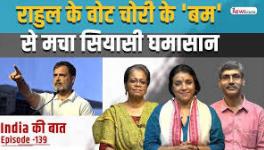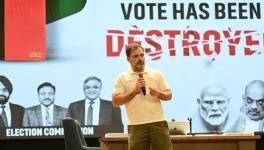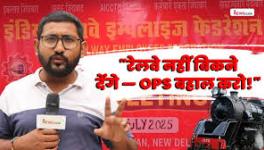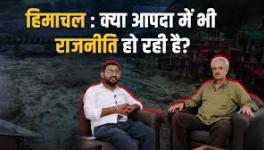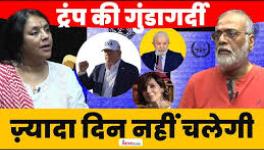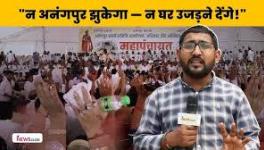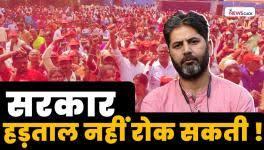Modi's Popularity Finds Itself in a Trap of its Own Making
At the heart of a carefully crafted image of Modi is his apparent ability to win elections and popular support on his own terms. This is what makes the support for Modi's unique. He has to consistently demonstrate an ability to win without ‘dependence’ on promises he makes or based on an evaluation of his performance. Winning based on promises and performance makes him ‘ordinary’, less than larger-than-life and lowers his self-esteem. Only a win as an exception counts for success in real terms. It is not about a win at all costs but despite the costs.
The economy requires liquidity and purchasing power, yet Modi's economic policy is more about offering loans than populist policies, even in an election year budget. It might be projected as a bid to focus on infrastructure, but the real driving force is the eagerness to project and prove the leader's ability to win despite no popular sops. In such an imagination, popularity is a non-negotiable variant. One is popular not because of one's popular policies, sops, or welfare but despite none of these ‘trappings’ of electoral politics. Winning based on negotiation and acceptance of popular demands is seen at best as a trade-off, at worst as a weakness. His projected ability to win despite unpopular policies is the litmus test of his popularity.
Modi did pull off such a feat with demonetisation before the previous elections in UP in 2017. He could carry the business community despite the GST. He enjoys a fair degree of support despite price rise, inflation, failing economy and growing unemployment. This is not a happenstance situation, but it seems to be born out of a compulsive need to prove the exception, while the opposition is seen to lose elections despite ‘falling in line’ with popular pressures. Even in situations where Modi could enter a bargain, he is able to implement far-reaching welfare policies, and he prefers to do it the other way. His popularity has to sieve through a popular leader's regular kind of understanding.
Even when he speaks untruth, his ability to win elections distorts facts and spreads misinformation. Misinformation is spread not as a strategy but as a test of the quality of his popularity. In this vein, Amit Shah did not hesitate to say in an interview that depositing 15 lakhs in individual accounts was a jumla. Suffering during demonetisation only leads to more, not less, support. The suffering of uncared for migrants fails to impact the results in Bihar. It is different than whatever loss is incurred due to such an image-building exercise is sought to be made good through a brilliant electoral strategy, constituency-wise data and loads of unaccounted spending.
Also, part of this underlying self-gratifying logic is his ability to undo the damage, whatever its extent. What matters is his ability to wriggle out of sticky situations that is not possible for other ‘ordinary’ leaders. Mismanagement of the pandemic might have resulted in the loss of lives, but Modi's Teflon coating becomes the focus of a strategy to come out unscratched. Modi's sharing of your loss and his teary eyes can wipe out the memory of the lost ones or give him the benefit of the doubt. The point is, any other leader in his place, would have suffered and made to pay for the negligence. We are witnessing this with Yogi Adityanath suffering a loss of popularity due to his mismanagement of the Covid crisis.
The repeated rule by exception is the quintessential quality of the exceptional leader. It is like an everyday ‘referendum’. In the leaders' self-image, it is even a higher form of consent than electoral outcomes, or electoral results are a ‘mere’ vindication of the ‘referendum’ that precedes every election. It could be demonetisation in 2017 or the abrogation of Article 370 in 2019. The rule by exception is reified by the leaders` ability to take exceptional decisions that no other leader could afford to make.
The farm protests brought this model of governance by exception to a screeching halt. It was assumed that Modi's credibility would convince the farmers about his intention to do good. When that did not happen, they tried to tire them out by numerous rounds of discussions. When that too failed, strategies to discredit the farmers and build alternative narratives were tried. When that too did not work, attempts to intimidate the farmers through violence was the last straw on the camel's back. It was only after that Modi attempted the damage-control exercise by taking back the farm laws and apologising for inadequacy in his tapasya and intent to do good for the farmers.
However, the real damage was done when farmers did not budge and refused to trust the leader even when the farm laws were withdrawn. They pressed for the withdrawal to be passed in the parliament and insisted on the other demands, including legal action and accountability for the deaths and implementation of minimum support price (MSP). This is now being followed up by the resolute commitment of the farmers to see the BJP defeated in the elections in UP and Punjab.
The hollowness of the rule by exception lay exposed in the commitment to stretch the struggle beyond compliance of withdrawal of the farm laws. The near-complete failure to narrativise the withdrawal and continued anger of the farmers created the required space for alternatives to emerge. Part of that we witnessed in the new configuration of alliances in UP and the visible desperation of the BJP. It made society stand up and think about why the farmers continued the protests even after their demands were met. It showed a way to think outside the set narratives of the regime.
Ajay Gudavarthy is an associate professor at the Center for Political Studies, Jawaharlal Nehru University. His views are personal.
Get the latest reports & analysis with people's perspective on Protests, movements & deep analytical videos, discussions of the current affairs in your Telegram app. Subscribe to NewsClick's Telegram channel & get Real-Time updates on stories, as they get published on our website.











